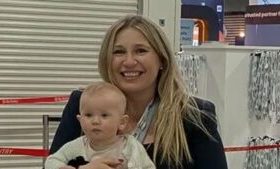If you’re leading a product launch, refreshing a website, or building out a campaign, you already know how hard it is to cut through the noise.
Static images and long-form copy only go so far, especially when your product has intricate features or a unique design. That’s where 3D product animation comes in—it gives you a flexible, dynamic way to tell your brand story and show off what makes your product worth caring about.
Whether you’re working in tech, beauty, electronics, or lifestyle, this output helps you communicate both function and feeling without relying on real-world limitations. Studios like Renderly create high-quality animations using techniques like fluid simulation, exploded views, and photorealistic lighting. These tools let you craft visuals that go far beyond simple product showcases; they create experiences that speak to your audience and support your brand’s message.
Here’s how to approach this project in a way that tells a clear, compelling story.
1 – Identify the Core Emotion Behind Your Story
Think about how you want people to feel when they interact with your brand. Curious? Empowered? Delighted? That emotional hook is what shapes the tone of the entire video. For example, if you’re launching a beauty product, you might want the video to feel smooth and calming. If you’re showcasing a new piece of hardware, it might be more about precision and confidence.
Start with the emotion, then tie it to the product’s purpose. This will help guide decisions about pacing, music, lighting, and even the camera angles you use later on.
2 – Build a Script That Balances Function and Feeling
Your animation needs to look great, but it also has to make sense. A well-crafted script can do both: highlight what your product does while reinforcing the emotion you’re aiming for. Write out the key beats. Which feature comes first? What’s the moment that delivers a “wow”? Where should the viewer feel a sense of clarity or understanding?
Don’t overstuff it with technical jargon unless your audience expects it. Speak to benefits and show them through action. If your product is waterproof, don’t say it—let a fluid simulation wash over it in the scene. Show, don’t tell, wherever you can.
3 – Develop a Visual Flow with Strong Transitions
Smooth transitions keep viewers engaged and help your message land. Avoid cutting from one idea to the next without a bridge, so think about how each scene flows into the next. Is there a movement that can lead you from the outside of a product to its internal components? Can a single motion carry you from one feature to another?
Visual continuity makes the animation feel intentional and polished. It also supports your story’s rhythm. In many cases, viewers will only see your video once, so clear, dynamic transitions help them absorb more information on the first watch.
4 – Use a Professional Studio to Bring Ideas Beyond Real-World Limits
A good 3D animation studio doesn’t just build models and apply textures; they also help you think differently about how your product can be presented. With tools like particle effects, exploded views, and advanced lighting techniques, they can visualize concepts that would be impossible or too costly to film.
You might want to break down a mechanical product mid-air, show a liquid flowing through it, or create a surreal environment that communicates brand values. Partnering with a studio like Renderly, which is experienced in product animation, helps you push the boundaries without losing clarity or focus. They’ll guide you through storyboarding, motion blocking, lighting, and final polish—all while keeping your marketing goals front and center.
5 – Enhance with Sound, Color Grading, and Dynamic Edits
The finishing touches matter more than you might think. A satisfying sound cue can make a feature feel more tactile. Subtle color grading can shift the entire mood. Even small timing tweaks in the edit can sharpen your message and make the animation feel tighter.
This stage is where emotion and precision come together. You’ve told your story—now you’re tuning it for impact. Every frame, every transition, and every sound contributes to how your audience experiences the product. Done right, it becomes more than just a product video. It becomes a branded moment your audience remembers.
Read more:
Telling Your Brand’s Story Using 3D Animation







